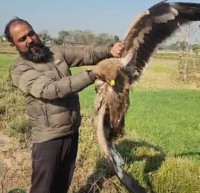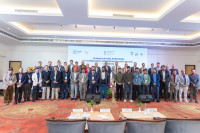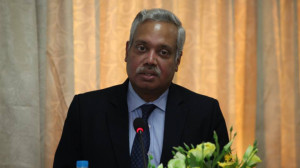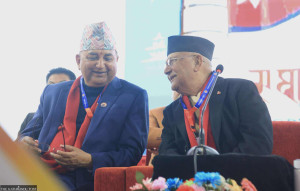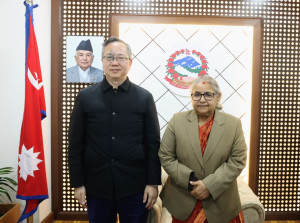National
Government-NEA dispute deepens over new committee
Power utility chief Ghising, officials question the legal basis of a tariff study panel formed by energy ministry.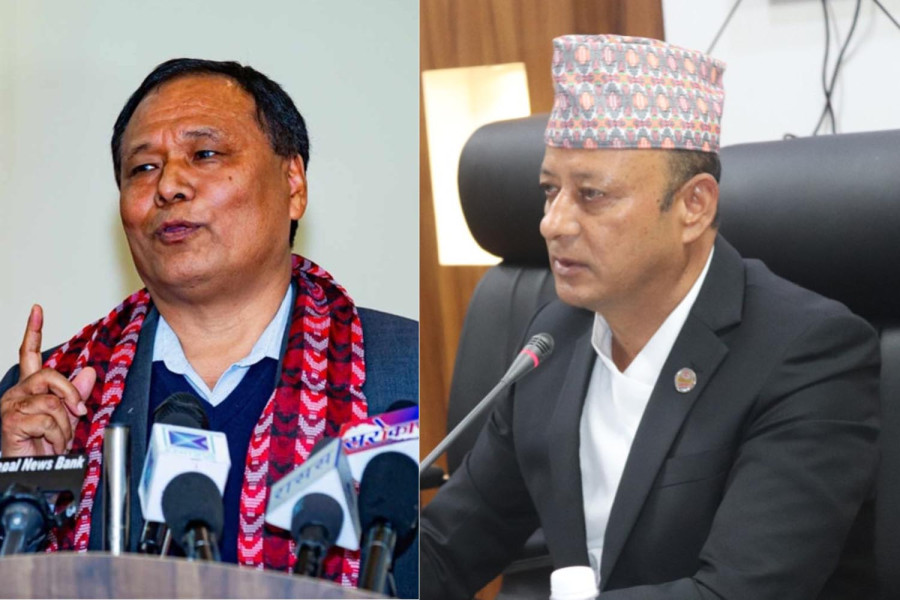
Purushottam Poudel
The standoff between the government and the executive director of the Nepal Electricity Authority (NEA) Kulman Ghising shows no sign of easing. The dispute has been simmering since the formation of the current government led by Prime Minister KP Sharma Oli, who is also the chairman of the second largest party in Parliament, CPN-UML.
The NEA on October 24 had decided to cut off power to dozens of industrial firms with pending electricity bills. However, citing the country’s sluggish economy, the government insisted on continuing power supply to these industrial firms.
Accordingly, the Council of Ministers on November 10 decided to reconnect the power supply to 28 such firms. Following the Cabinet’s decision, the NEA, on November 12, reconnected the power supply. The Cabinet in its decision also set a 15-day deadline for the firms to clear the dues. But the firms ignored the deadline.
Despite this, the government prevented the authority from further action against the defaulting firms, and instead formed a three-member committee to investigate the billing dispute over dedicated feeders and trunk lines. The committee announced by Energy Minister Dipak Khadka is headed by former member of the National Planning Commission Arvinda Kumar Mishra, with former NEA official Shree Ram Pandey and chartered accountant Sujan Kaphle as members.
But the committee has yet to start working effectively even after over a month of its formation. The ministry has also asked the authority to provide resources to the committee.
“We have asked for necessary data from the NEA. Once we get it, the committee will start its work,” said Pandey, a committee member. “It's been more than 15 days since we requested the data, but we are yet to receive it.”
Meanwhile, NEA Executive Director Ghising has objected to the NEA board's recent decision to provide resources and data to the committee established by the ministry.
At the meeting of the NEA board on December 19, Minister for Energy, Water Resources and Irrigation Dipak Khadka proposed using NEA funds for the committee’s wages, operating expenses, and vehicles. However, Executive Director Ghising and two other board members—Ratan Ayer and Bharat Acharya—objected, questioning the legality of the committee and filed a ‘note of dissent’.
“During the board meeting, Ghising filed a note of dissent opposing the formation of a committee to study the Time of Day (ToD) meter,” an official privy to the development said.
“This committee should have been formed either through a regulatory authority or the judiciary,” the official said.
High-ranking officials within the energy ministry have also questioned the legal basis of the committee formed by Minister Khadka.
“The committee has been formed to investigate the tariff charged by the authority, but under which law was the committee formed? And on what basis will it operate?” says an officer of the ministry, requesting anonymity. “There is no basis for the NEA to provide TOD meter data to such a committee for bill investigation.”
The committee has been tasked with reviewing and correcting the bills charged to the firms using dedicated and trunk lines, based on the TOD meter.
“The law already has a mechanism for resolving disputes between the authority and its customers. Customers dissatisfied with the NEA’s decision can go to the Electricity Regulatory Commission,” the officer said. “There is no need for another committee to review electricity tariffs.”
On January 9 last year the then government under the leadership of CPN (Maosist Centre) chair Pushpa Kamal Dahal had formed a commission under Girish Chandra Lal, a former Supreme Court justice, to recommend ways to resolve the tariff dispute over the use of dedicated feeders and trunk lines. The power use happened between July 2015 and June 2020.
In that period, the government had made special arrangements to supply power to industrial firms even as the authority enforced hours-long power cuts on other consumers.
The Lal commission submitted its report to the Dahal government on May 6 last year. But the new government only released the Lal commission’s report on November 11, a day after the Cabinet decided to continue the power supply to the firms.
The commission recommended that, for the period from January 2016 to April 2018—when the country faced severe power shortages and rationing—tariffs for using the exclusive arrangement should be determined based on the prescribed standards for days and hours of electricity supply.
According to the authority, industrialists owe around Rs8.25 billion—Rs6.65 billion in principal dues, plus a 25 percent penalty. The initial estimate of arrears for firms using dedicated feeders and trunk lines was almost Rs22 billion. However, the amount was reduced following adjustments based on the recommendations of the Lal commission.




 10.12°C Kathmandu
10.12°C Kathmandu

